Lumintop GT Micro Flashlight Review
Lumintop has released the GT Micro flashlight, which runs the Narsil interface and uses a single 14500 cell. This Cree XP-L HI light has great throw!
Official Specs and Features
Here’s a link to the Lumintop GT Micro Flashlight product page.
Versions
There’s just one body, but it’s available with an NW or CW tint. Of course, if you’re interested in different cell sizes, the other bigger GT’s are options (GT, GT70, GT Mini).
Price
My GT Micro came from NealsGadgets. Here’s an affiliate link where the price is $40 for the light, with cells available from $5-7.
Short Review
Ok, I’ll agree that this isn’t the most practical of lights. But how fun is a 14500 with >400m of throw. Ridiculously fun, that’s how much fun. Where else can you legally have ridiculous fun for $40? I rest my case.
Long Review
The Big Table
| Lumintop GT Micro | |
|---|---|
| Emitter: | Cree XP-L HI |
| Price in USD at publication time: | $40 |
| Cell: | 14500 |
| Turbo Runtime | High Runtime |
| LVP? | Yes |
| Switch Type: | E-Switch |
| Quiescent Current (A): | |
| On-Board Charging? | No |
| Claimed Lumens (lm) | 1000 |
| Measured Lumens (at 30s) | 902 (90.2% of claim)^ |
| Claimed Throw (m) | 400 |
| Candela (Calculated) in cd (at 30s) | 1742lux @ 5.392m = 50646cd |
| Throw (Calculated) (m) | 450.1 (112.5% of claim)^ |
| Item provided for review by: | Neals Gadgets |
| All my Lumintop reviews! | |
^ Measurement disclaimer: Testing flashlights is my hobby. I use hobbyist-level equipment for testing, including some I made myself. Try not to get buried in the details of manufacturer specifications versus measurements recorded here; A certain amount of difference (say, 10 or 15%) is perfectly reasonable.
What’s Included
- Lumintop GT Micro
- Lanyard
- Spare o-rings (2)
Package and Manual
Fairly typical packaging for Lumintop. Fliptop box, with custom foam inside.
I didn’t receive a manual with my package, but I expect that you will.
Build Quality and Disassembly
Like all the GT’s before it, the Micro is well made.
My single biggest (and really only) complaint is that I think the text printed on the side doesn’t look right-sized, and/or is not exactly where it should be. But that’s an extremely minor complaint.
The tail cap has ridges for grip. Knurling would be nice, but the threads on these GT’s are smooth enough that the tailcap removes easily anyway.
The head has come cooling fins, and they work well.
The threads are anodized and square-cut, and just very lightly lubed. They’re very nice threads!
The cell tube is fully removable, and exactly the same on both ends. It’s fully reversible. Also, note that the anodized threads make for a very easy mechanical lockout!
The tailcap has a double spring, but it’s not extremely stiff.
The head has only a brass button.
The button top cell I used in this light (Efest 700mAh 14500) had plenty of room. Any sized 14500 should work fine.
Size and Comps
Officially: Weight: Approximately 70g without cells
Dimensions: 36 mm Ø head x 105mm length
The GT Micro is surprisingly close to the Convoy S2+ in length. But it’s a thrower, so there’s 1″ of reflector or more willing to explain that. No big deal there.
Here’s the test light with the venerable Convoy S2+. Mine’s a custom “baked” edition Nichia 219b triple. A very nice 18650 light.
Here’s the Mini beside the Micro. The Micro makes the Mini look huge! But neither is huge.
And here’s the family. I lack a GT70…. And yes I keep the GT in shorty mode. I’d run it with 18350×4 just for giggles, if I could source the tube.
Retention and Carry
I managed to carry the Micro in my pocket a little, but generally, the best (and only included/intended) way is the lanyard. The lanyard attaches through a hole on the tailcap.
Power and Runtime
I tested exclusively with the Efest IMR14500 700mAh seen below. Since this is a FET light, on turbo you could get better performance with a better cell.
Having said that, even with this cell, performance was practically up to specification. 900 lumens on turbo is only ~10% difference from the claim, which is (for me) “close enough.” There’s a heavy stepdown at around 3 minutes probably due to temperature.
The output on High looks much like the output on Turbo, except that there’s no discernible stepdown – the light never reaches the temperature required for a stepdown, so output on High just more or less tracks cell voltage.
The light does have LVP. At 2.7V the main emitter flashes to warn the user, and at 2.6V the light shuts off completely. In my tests I have “never shut off” because I stopped the test when the light hit the very low mode, long before the LVP would have kicked in anyway.
Pulse Width Modulation
Here you can see a “baseline” – a chart with almost no light hitting the sensor.
Then there’s the Ultrafire WF-602C flashlight, which has some of the worst PWM I’ve seen. It’s so bad that I used a post about it to explain PWM! Here are multiple timescales (10ms, 5ms, 2ms, 1ms, 0.5ms, 0.2ms) to make comparing this “worst” PWM light to the test light easier. That post also explains why I didn’t test the WF-602C at the usual 50us scale.
Stepped mode:
User Interface and Operation
There’s a single switch on the GT Micro. It’s a side, e-switch, and has an indicating emitter under it. The indicator is green. The button is completely smooth but reasonably grippy. Being familiar with the GT family, the photos below are deceiving. The button is small – maybe 8mm. Knowing the GT family, it’s tempting to think it’s much bigger.
The user interface is exactly as on the GT, which I just reviewed. This will be a copy-paste of that UI. I also always set these lights to stepped for testing, since it gives me something discreet to test. But ramping is all the rage, and I like it fine too, so it’s nice to be able to switch between the two.
The user interface itself is a version of Narsil, by Tom E. The version my light shows is Narsil 1.3. (Check this by clicking 3x, then 2x, then 2x, and the version will be blinked. 1 blink, pause 3 blinks.)
The user interface is much too complex for my usual table, and I’m not going to undertake that here. This Cheat Sheet is not my work! but is very useful, and thorough.

There are two groups. One group has ramping, one group has discrete modes. It’s possible to switch between ramping and discrete easily. The default is ramping, and to switch to modes, first turn the light on, then hold the switch for 3.2s. It’ll blink twice, pause, and blink once. At that point, click once. This disables ramping. Once this is done, put the light down so you don’t change other settings (which is very easy to do.) There are other things you could do to expedite the termination of programming, but just skip it, and wait.
Narsil is wonderful firmware. It’s extremely versatile, and possible to change many (most? all?) of the settings of the light.
Modes and Currents
This is just for the stepped modes.
| Mode | Mode Claimed Output (lm) | Claimed Runtime | Measured Lumens | Tailcap Amps |
|---|---|---|---|---|
| Turbo | 1000 | – | 902 | [FET]^ |
| High | – | – | 419 | 1.50 |
| Medium | – | – | 148 | 0.29 |
| Low | – | – | 11 | 0.03 |
| Moon | – | – | 0.5 | 0.01 |
^ I will no longer be testing current on the highest mode (or any full FET mode). FET lights will take all the current available to them, so it’s meaningless for me to say my bench power can pump 20A into this light since I don’t know of any 14500 able to do that. Essentially, with FET lights, use the best cell available to you!
LED and Beam
The emitter chosen for this tiny thrower is a Cree XP-L HI. This has been the standard of choice for a long while for throwers, and it’s a fine choice here. Another neat choice would have been an emitter by Osram, which is making the rounds in throwers now, and would have probably given this little thrower even more punch, and made it just that much more ridiculous fun. But I happen to love XP-L HI’s, so it’s a good choice.
The light can be bought in NW or CW options.
LED Color Report (CRI and CCT)
The Cree XP-L HI used in the Lumintop GT Micro here is cool white – cooler as the output increases (from around 5600K to around 7200K). The CRI is in the low 70’s, too.
Beamshots
These beamshots always have the following settings: f8, ISO100, 0.3s shutter, and manual 5000K exposure. These photos are taken at floor level, and the beam hits the ceiling around 9 feet away.
Tint vs BLF-348 (KillzoneFlashlights.com 219b version) (affiliate link)
As you can see, I ended up with the CW version. What better reason to throw in an Osram than that!
I compare everything to the Killzone 219b BLF-348 because it’s inexpensive and has the best tint!
Random Comparisons and Competitive Options
Here’s a link to a relevantly filtered page on parametrek.com. I use that site a lot! There really aren’t any other 14500 throwers. There’s just nothing else like this light!
Conclusion
What I like
- Ridiculously fun 14500 thrower
- Narsil is a great UI
- Indicating side switch
- LVP
What I don’t like
- Doesn’t support AA
- At this point in size, it’s a bit weirdly shaped for the hand
Notes
- This content originally appeared at zeroair.org. Please visit there for the best experience!
- For flashlight-related patches, stickers, and gear, head over to PhotonPhreaks.com!
- Use my amazon.com referral link if you’re willing to help support making more reviews like this one!
- Please support me on Patreon! I deeply appreciate your support!







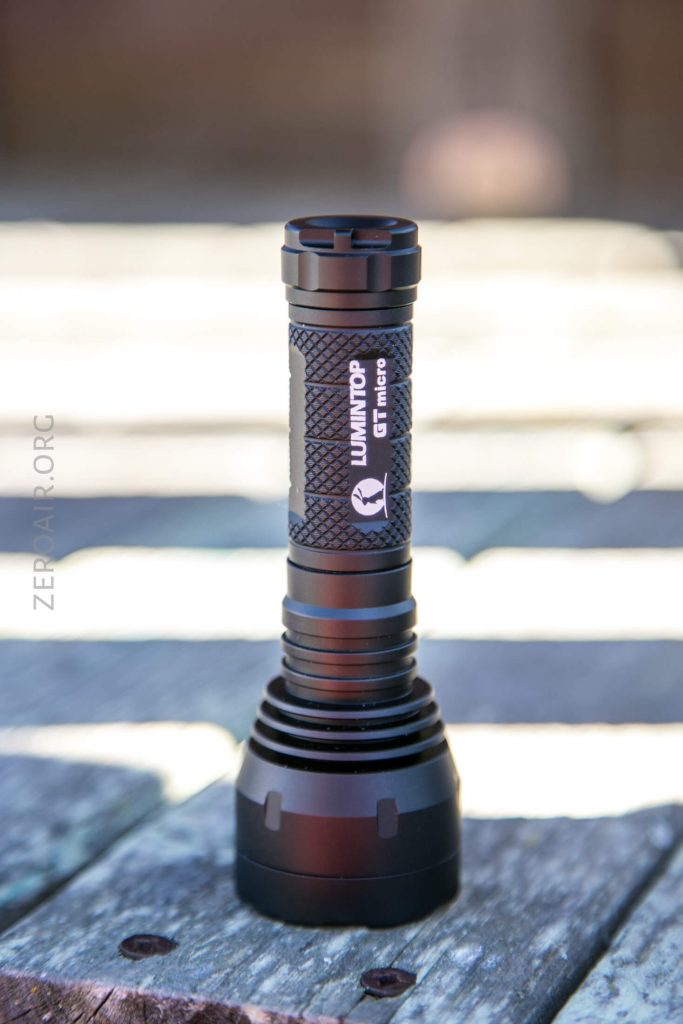
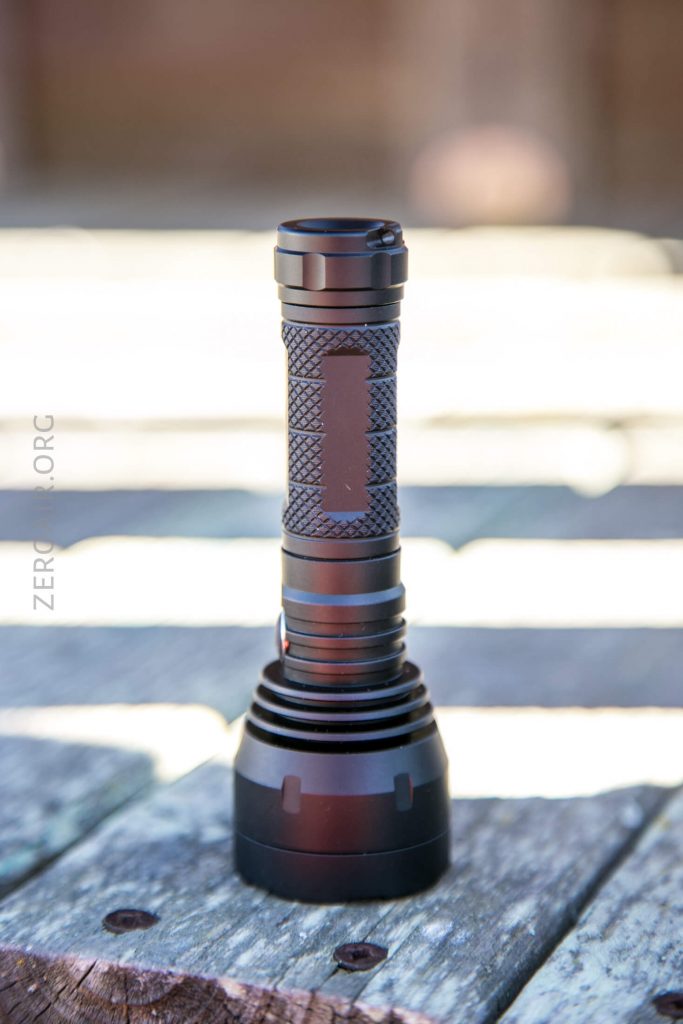
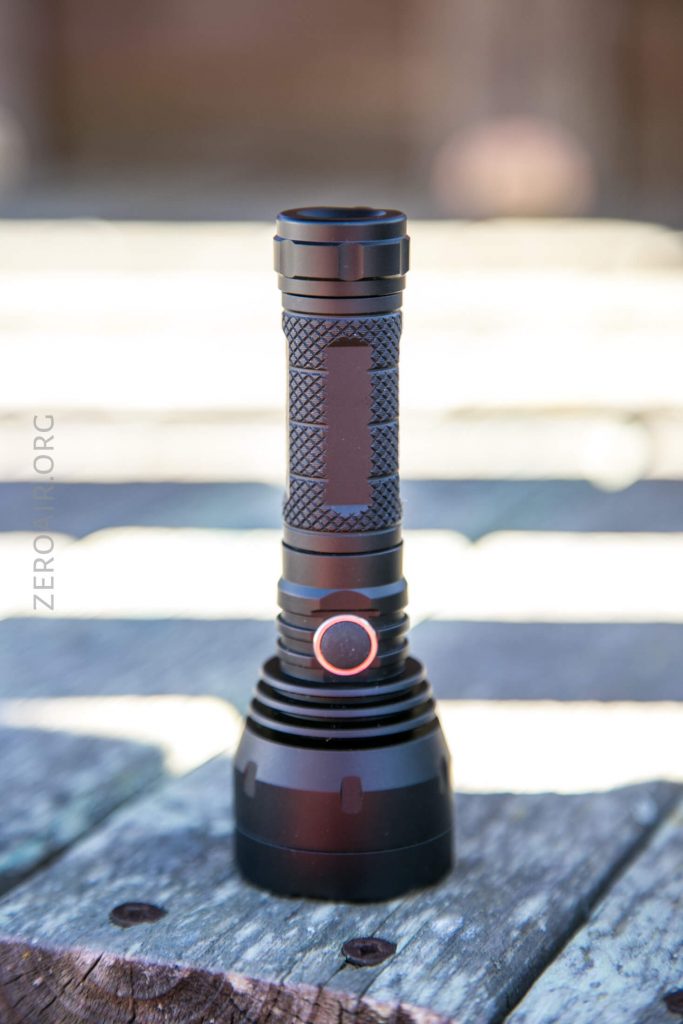
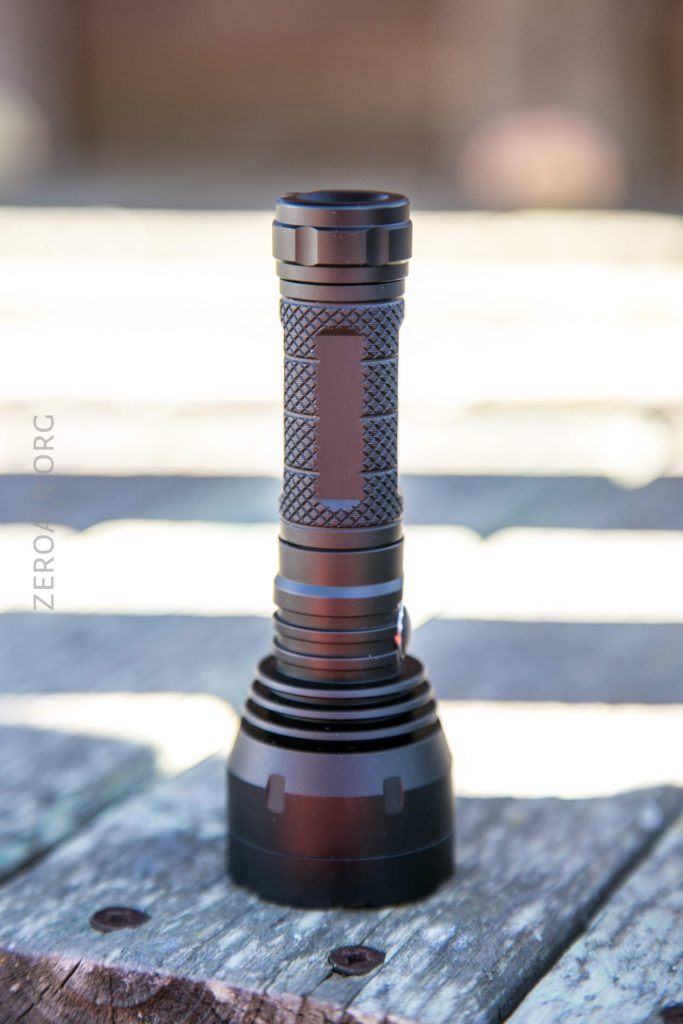



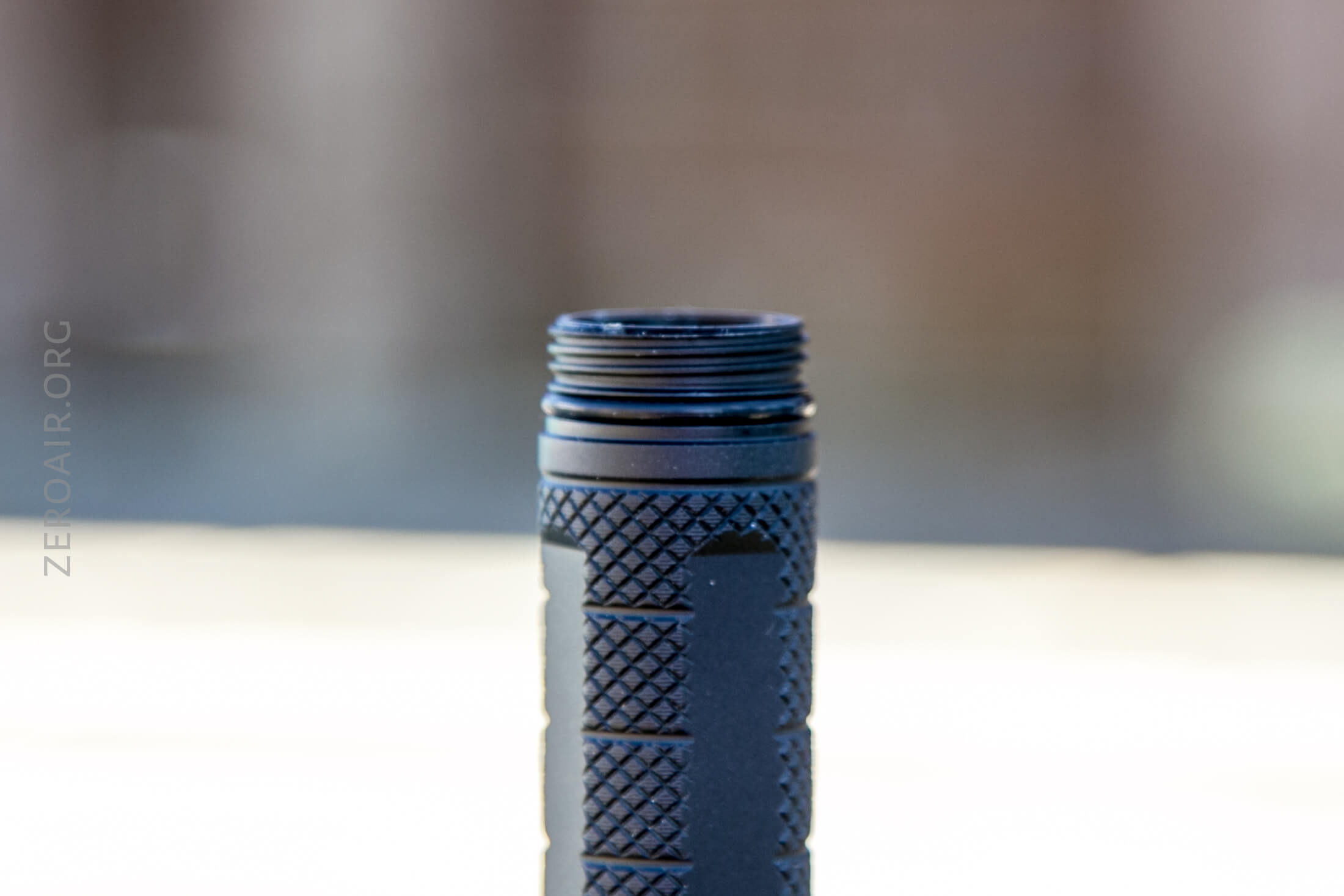

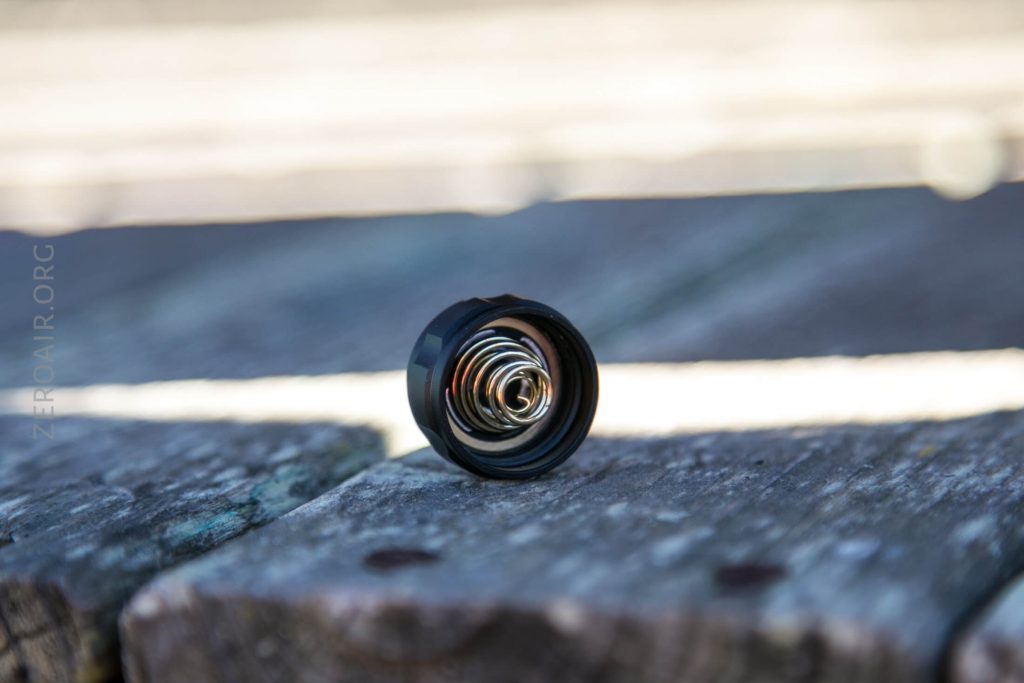
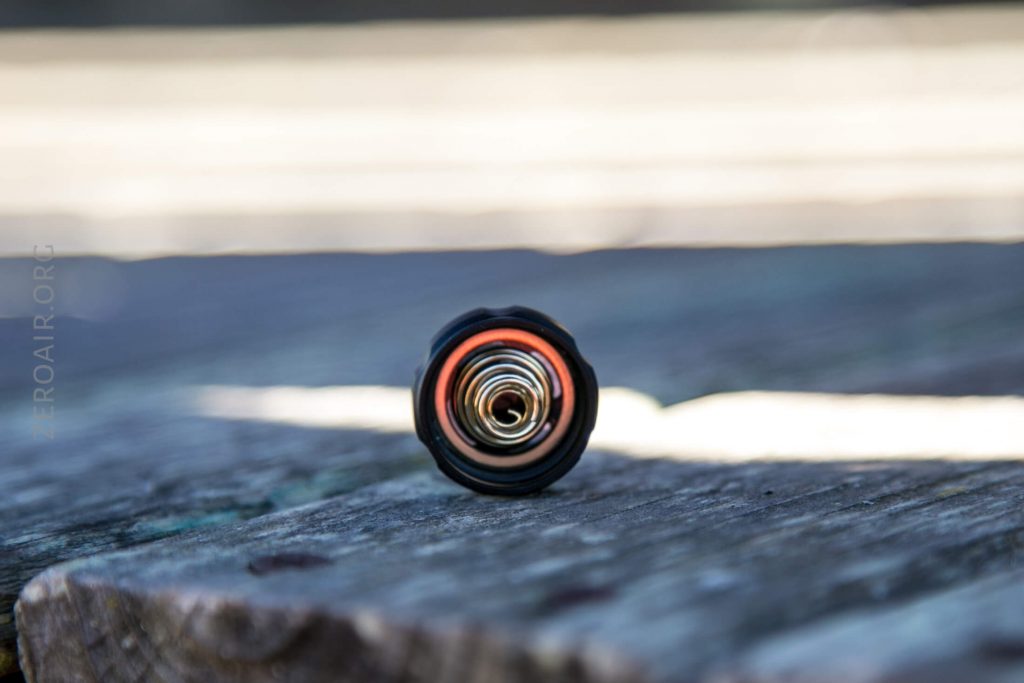
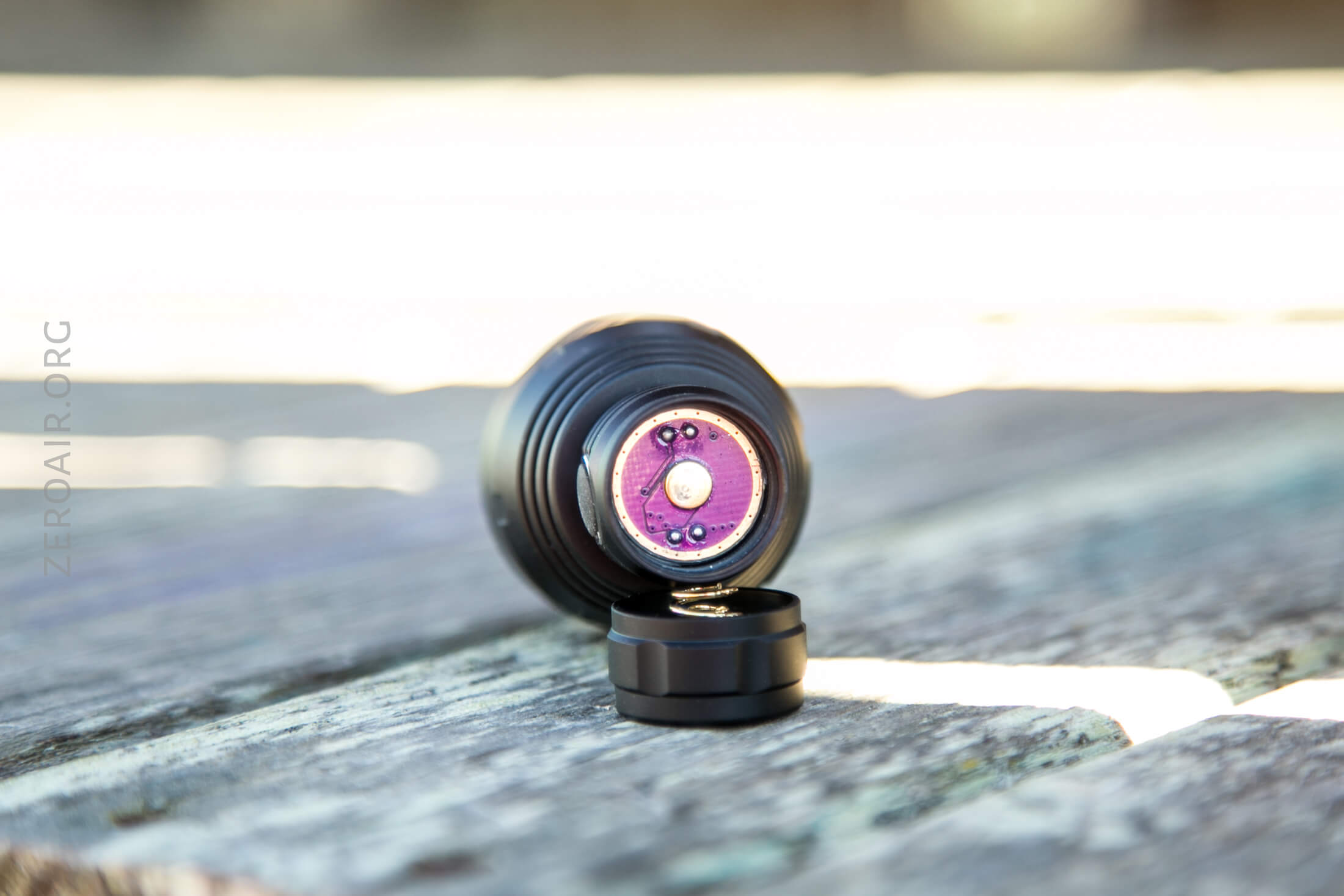




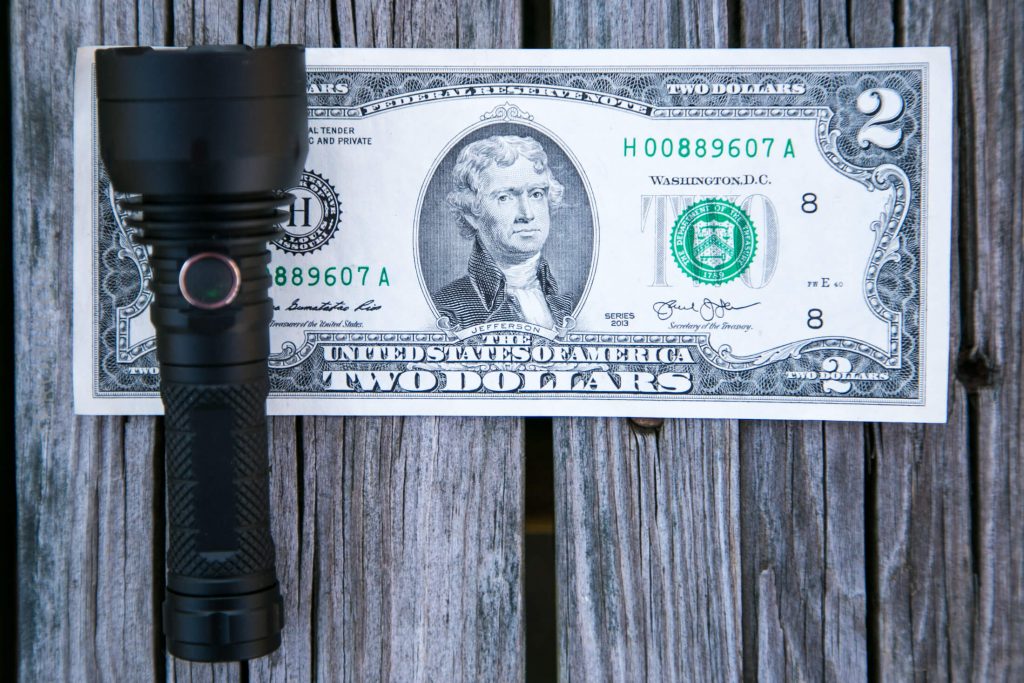
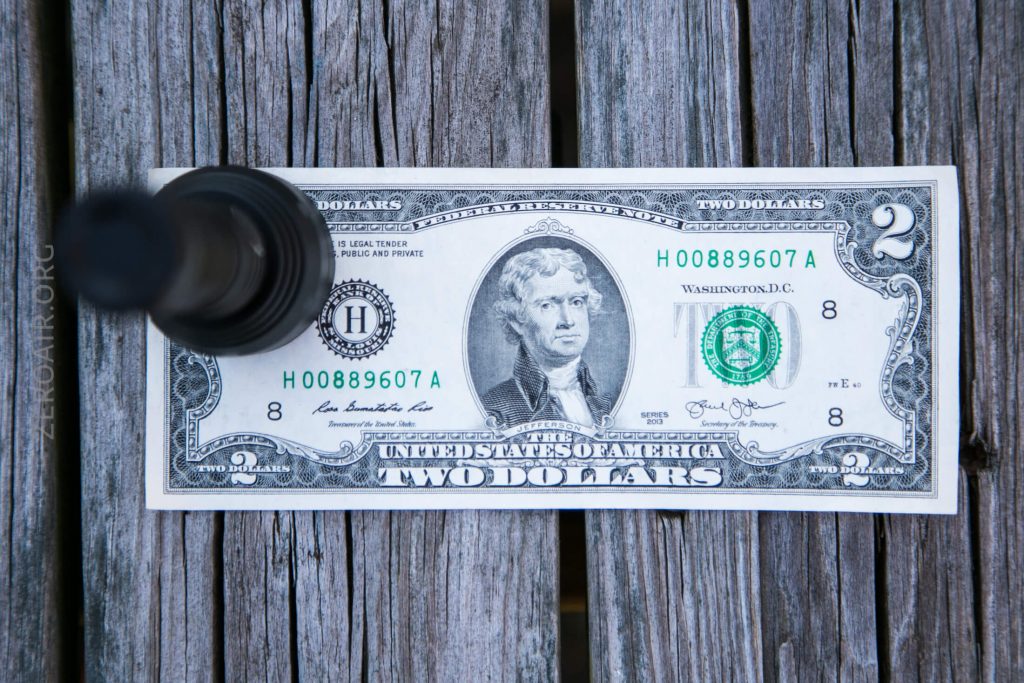

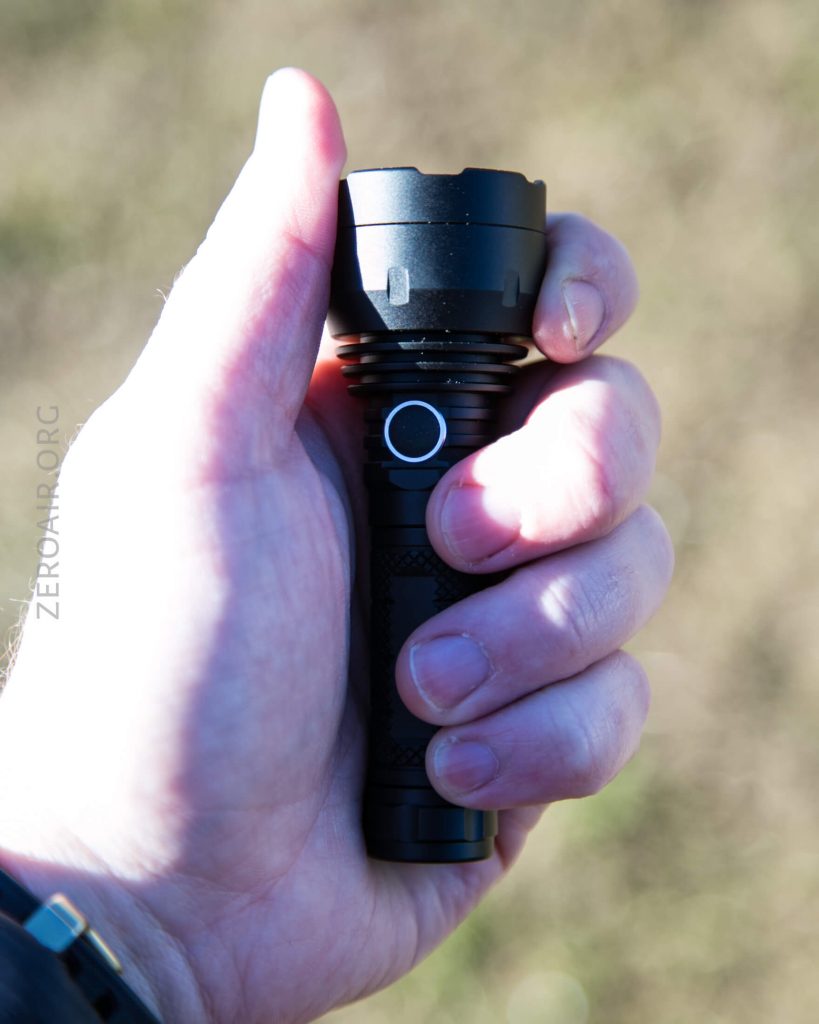
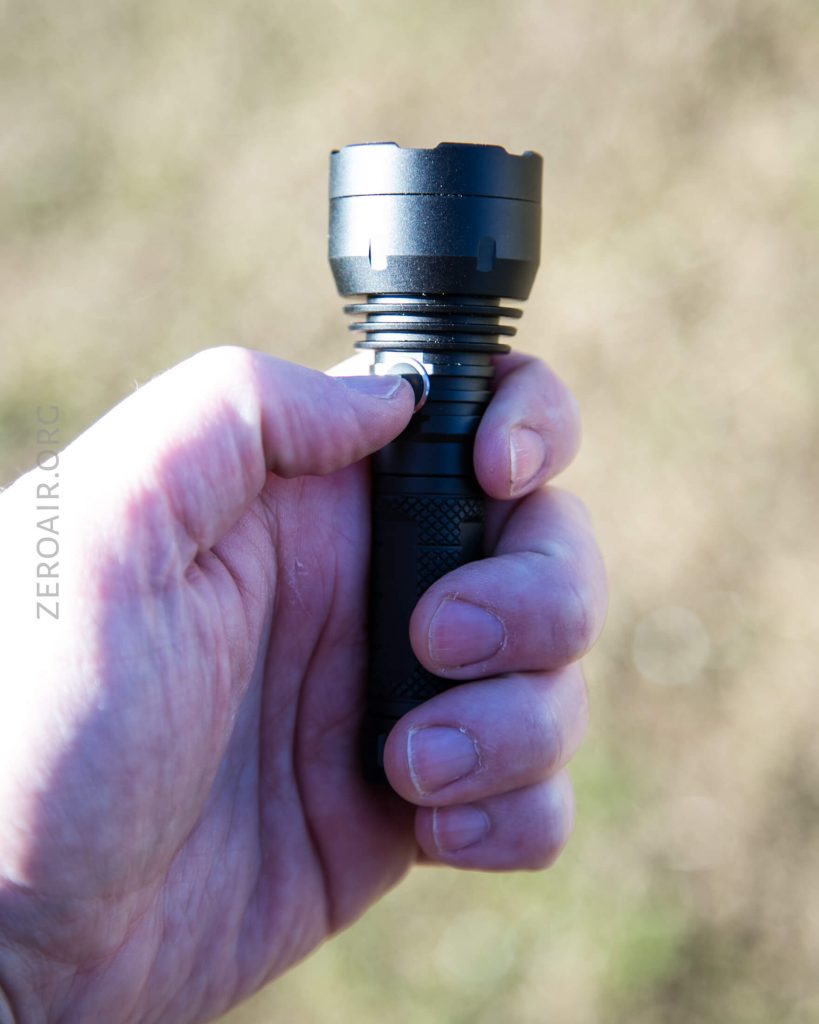

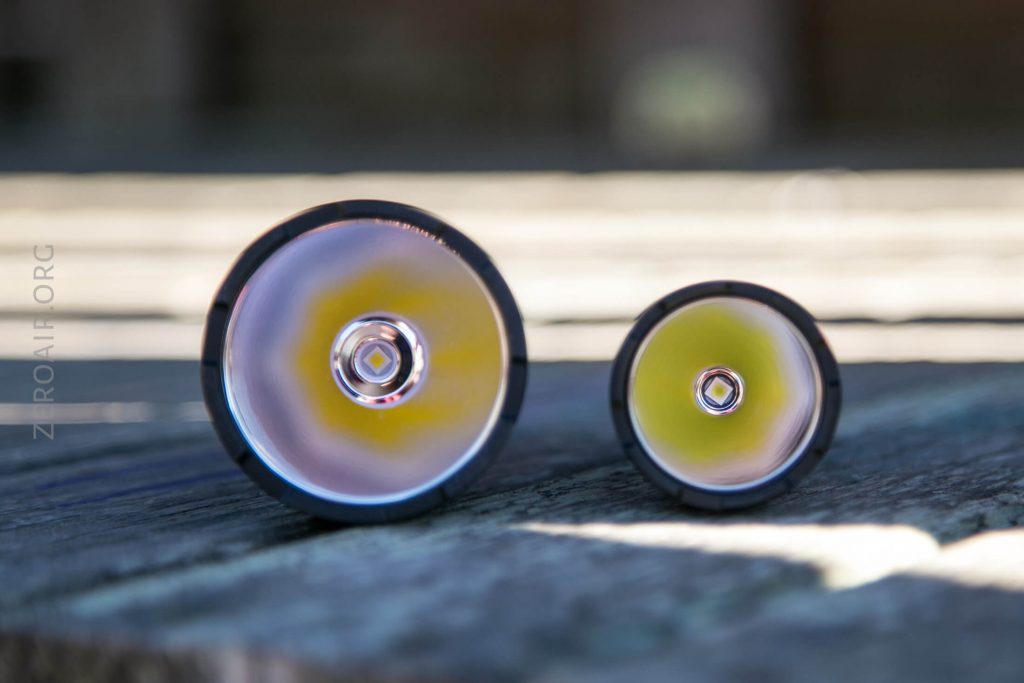









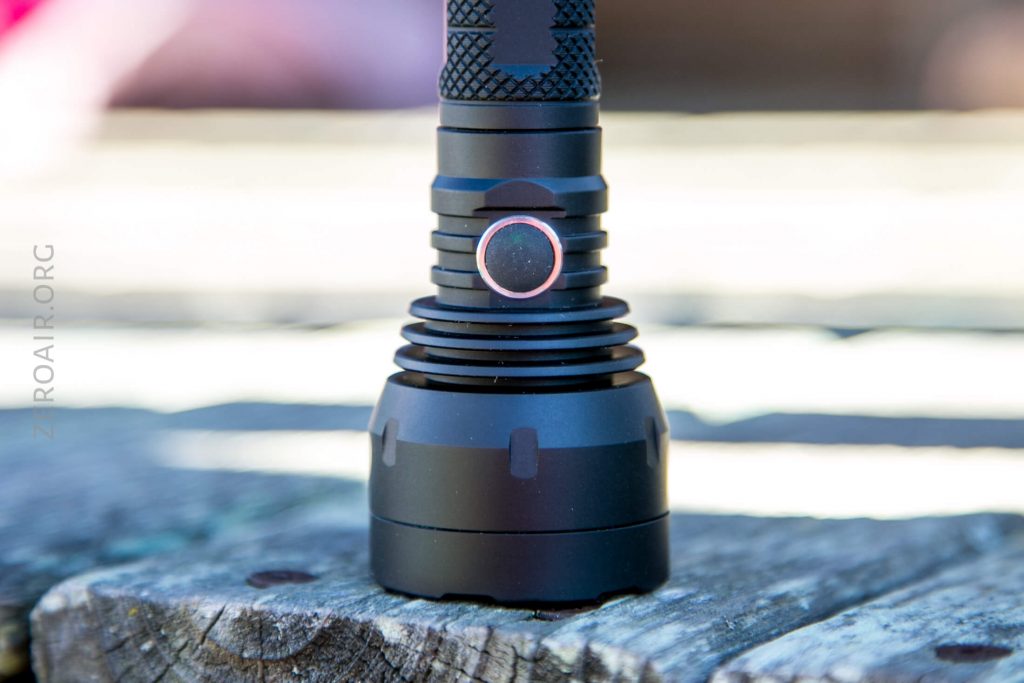
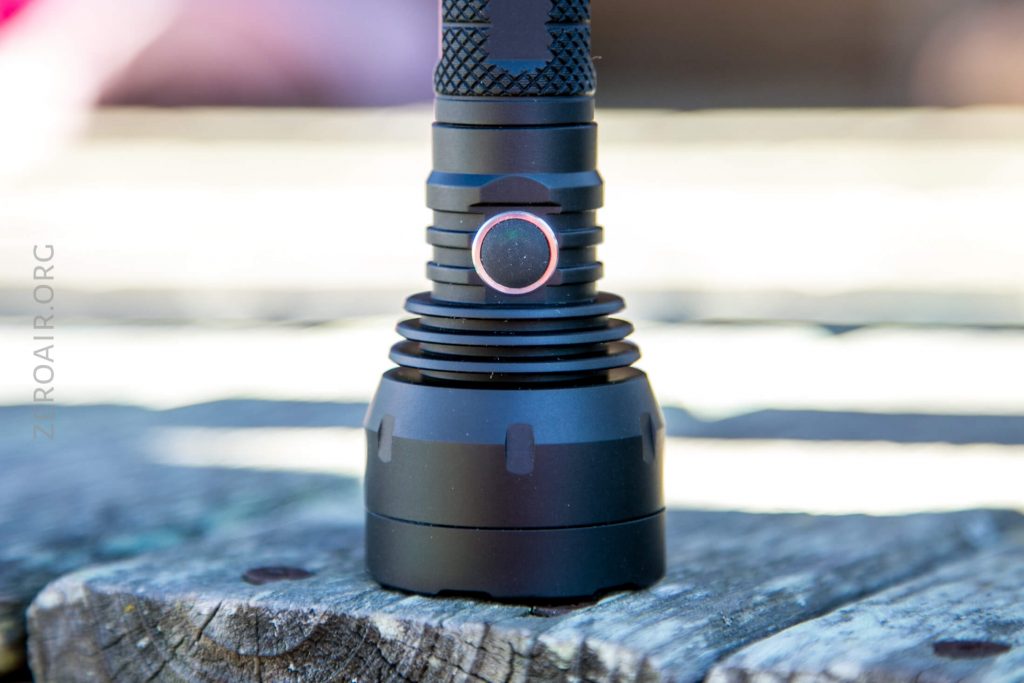

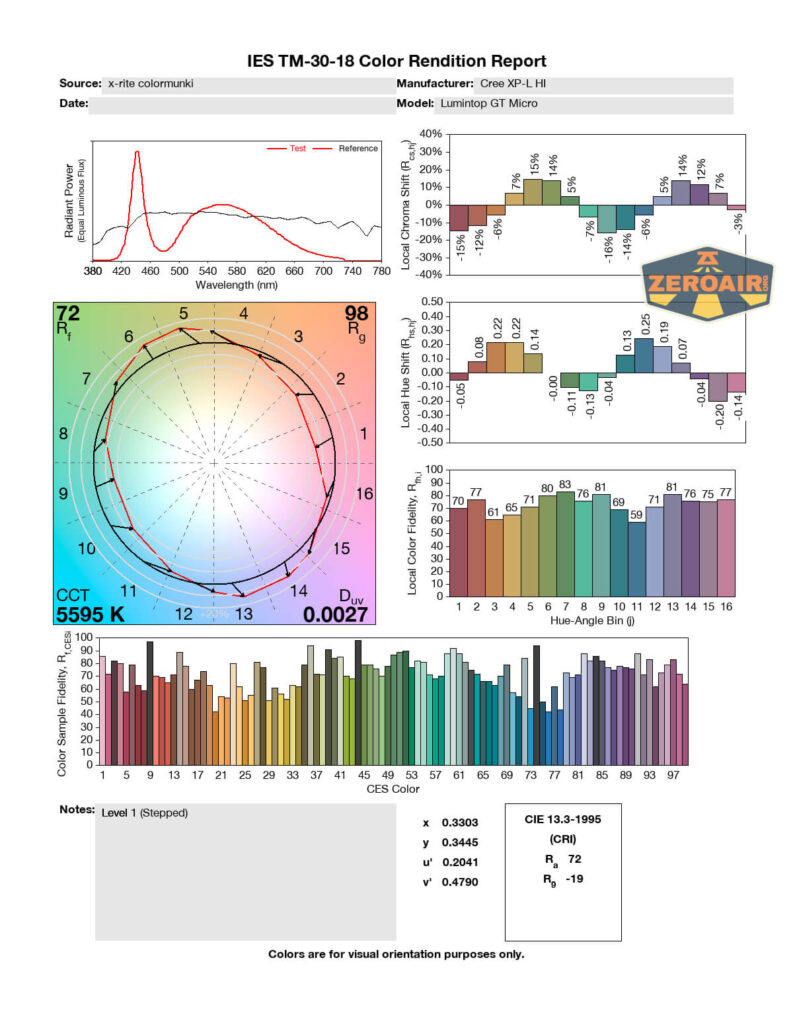
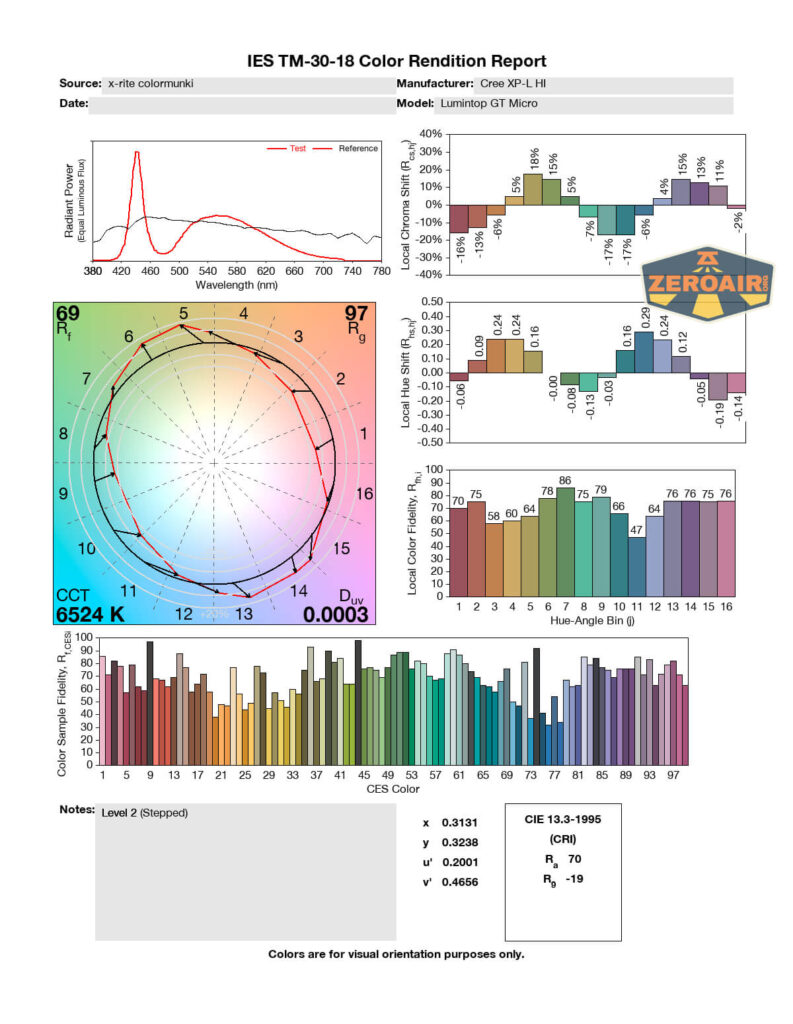
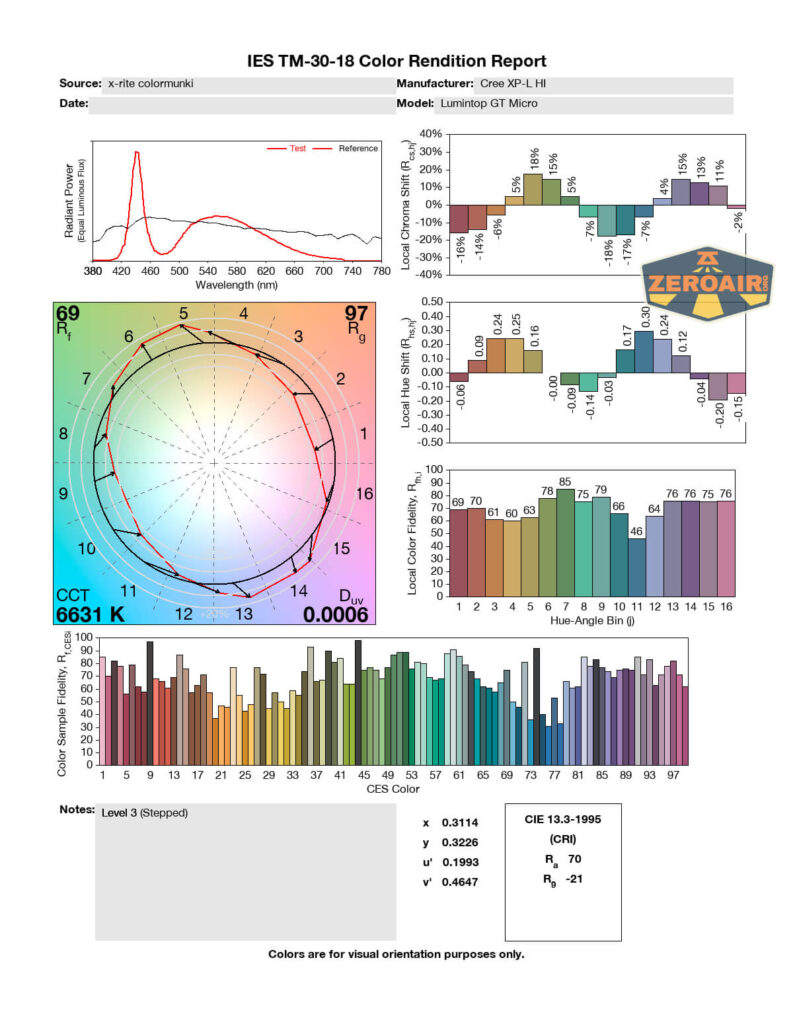
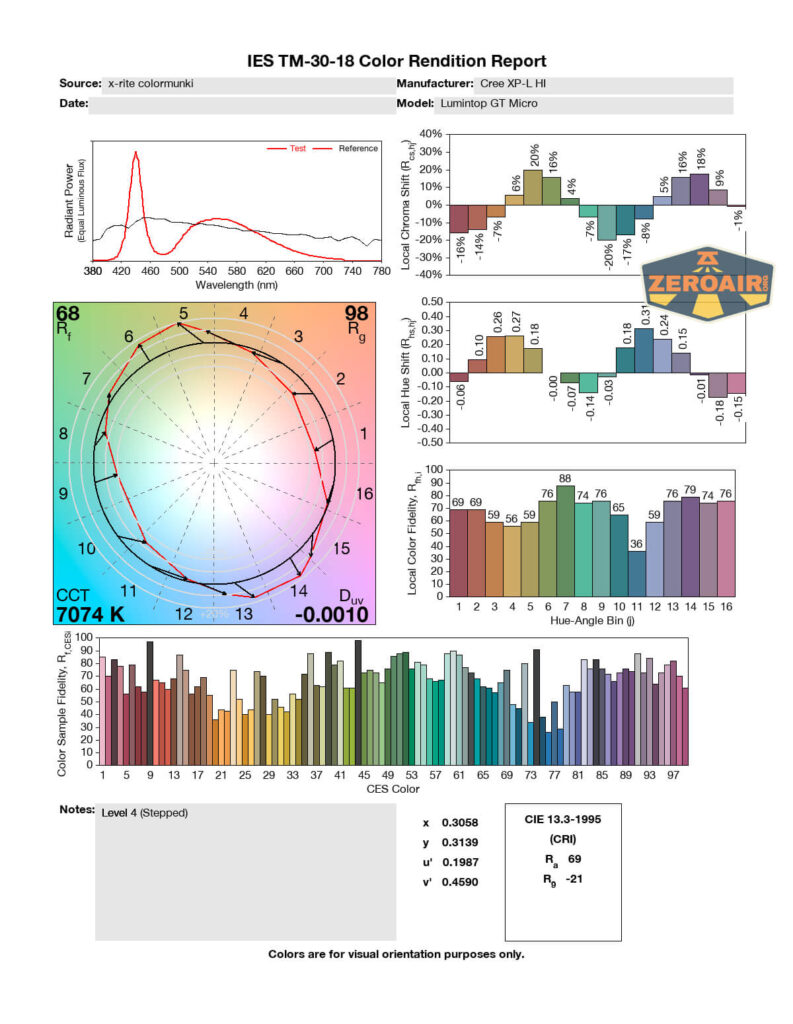
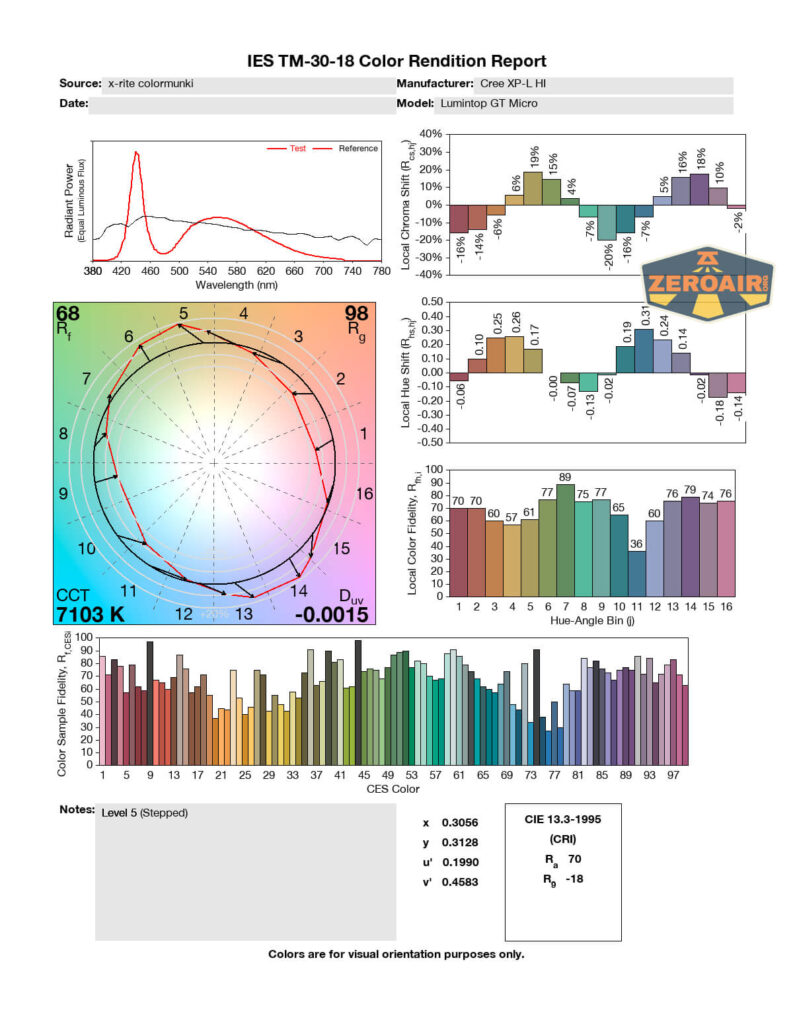
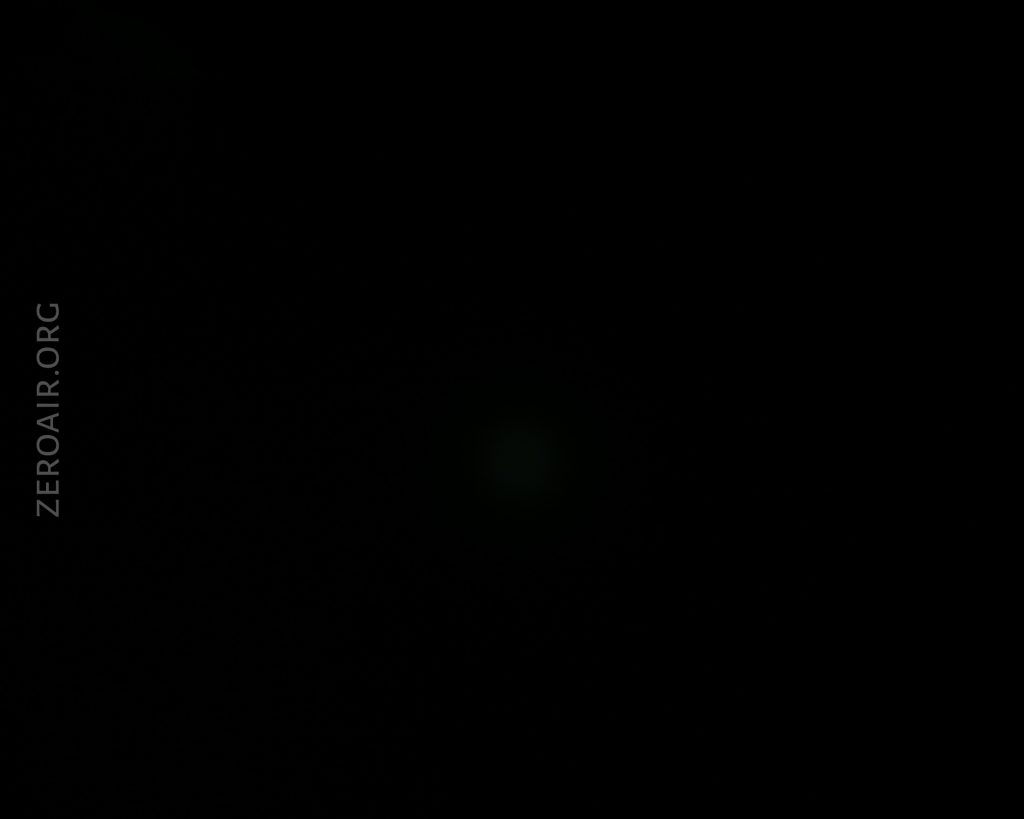
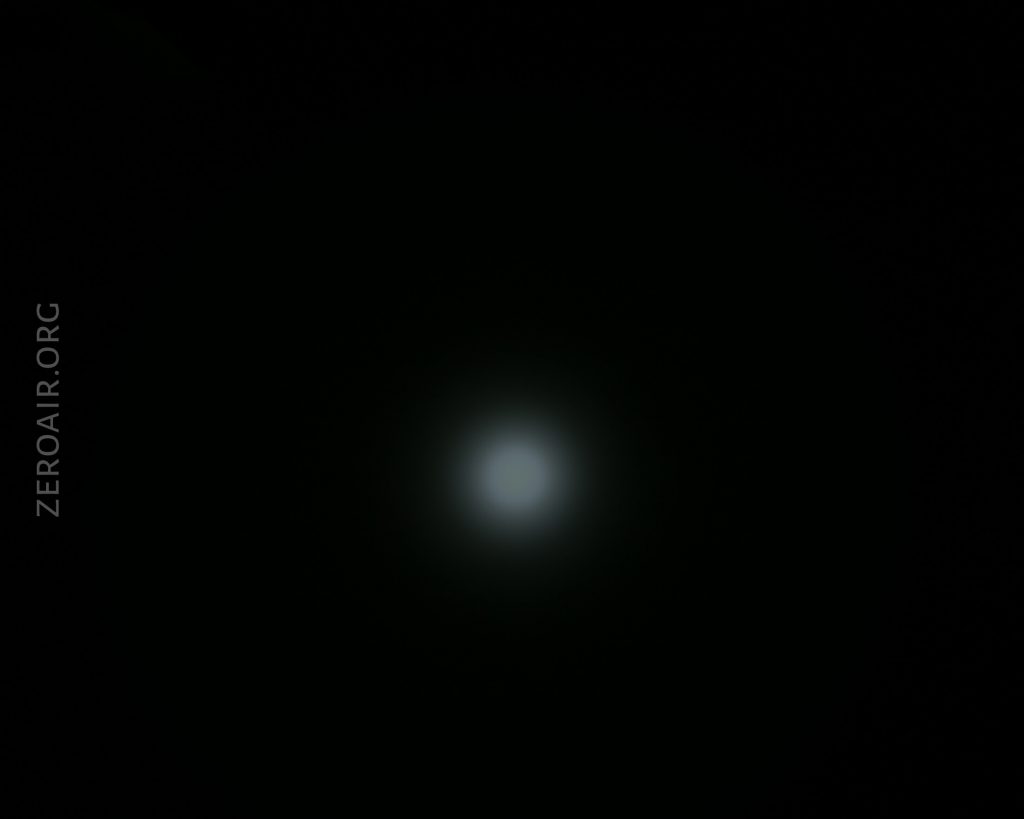
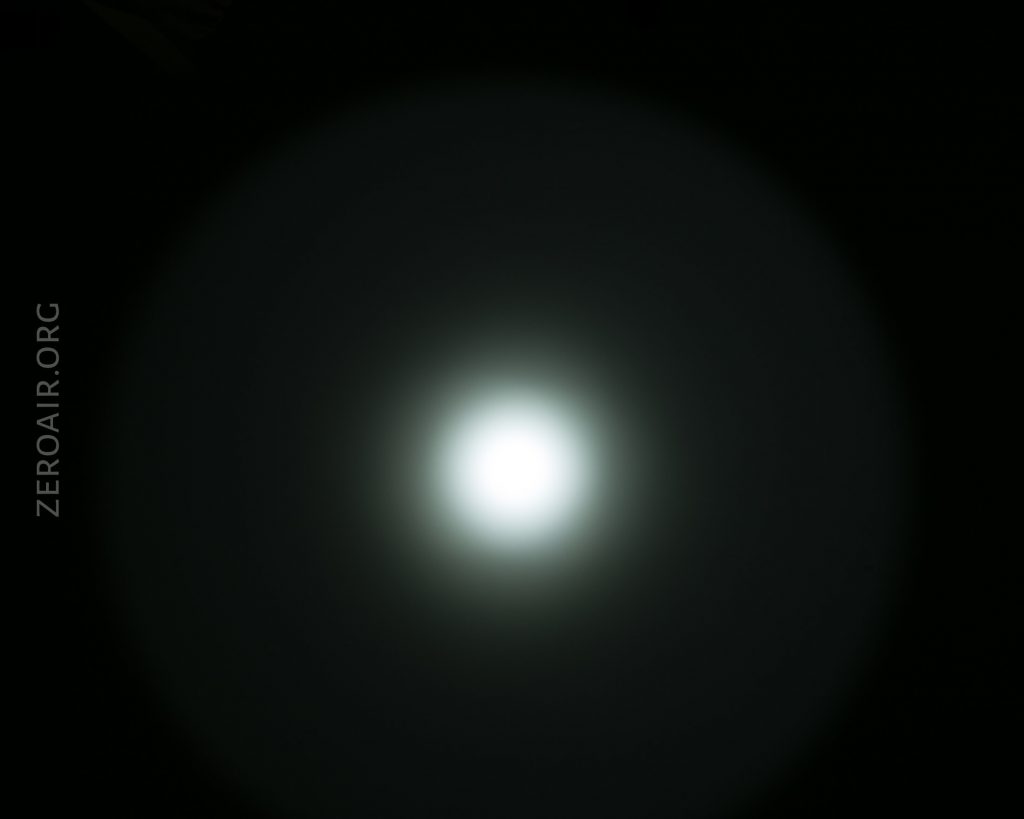
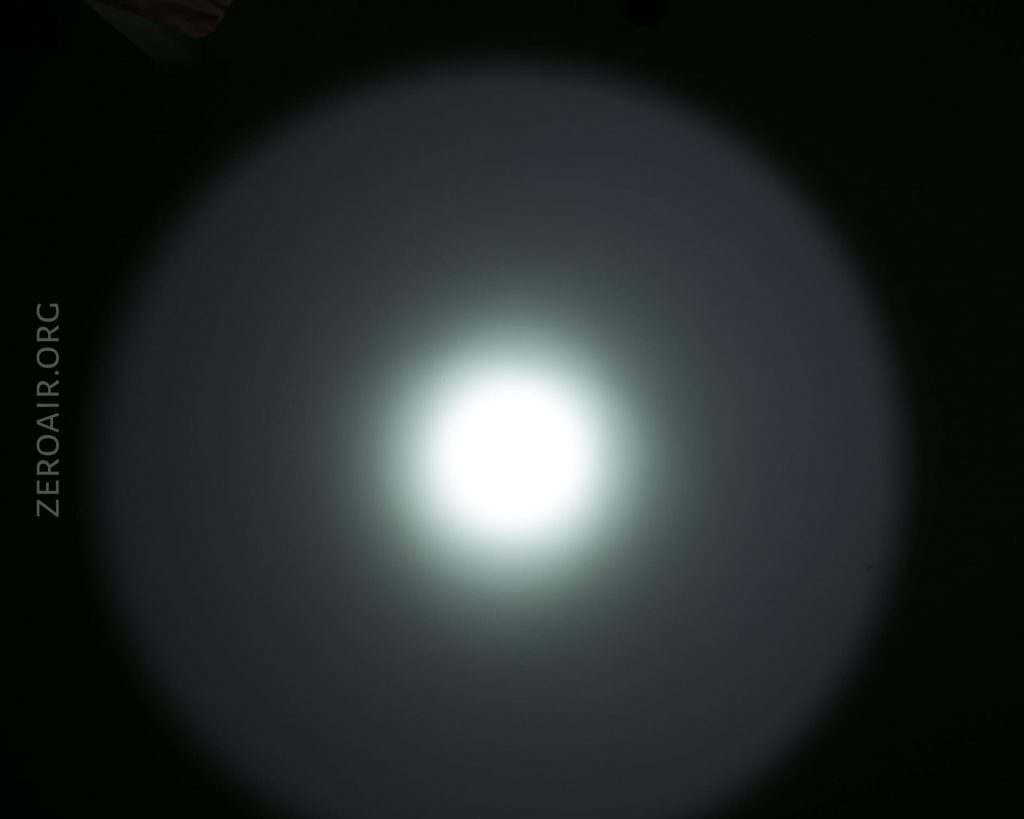
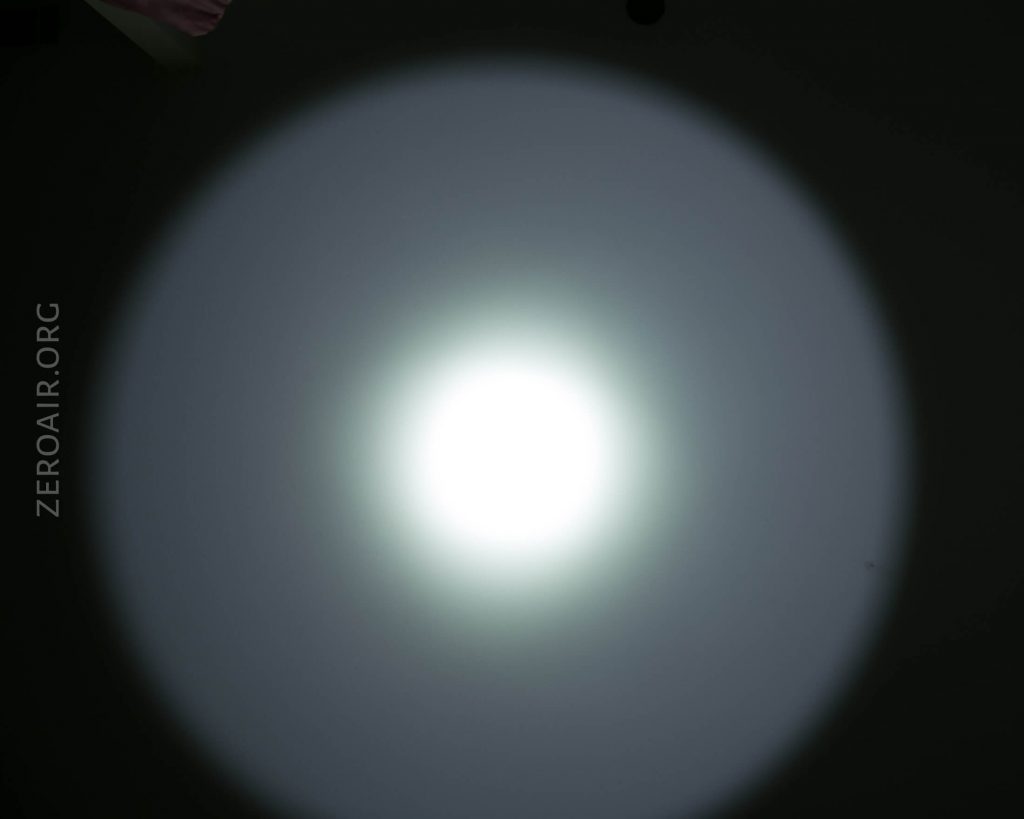
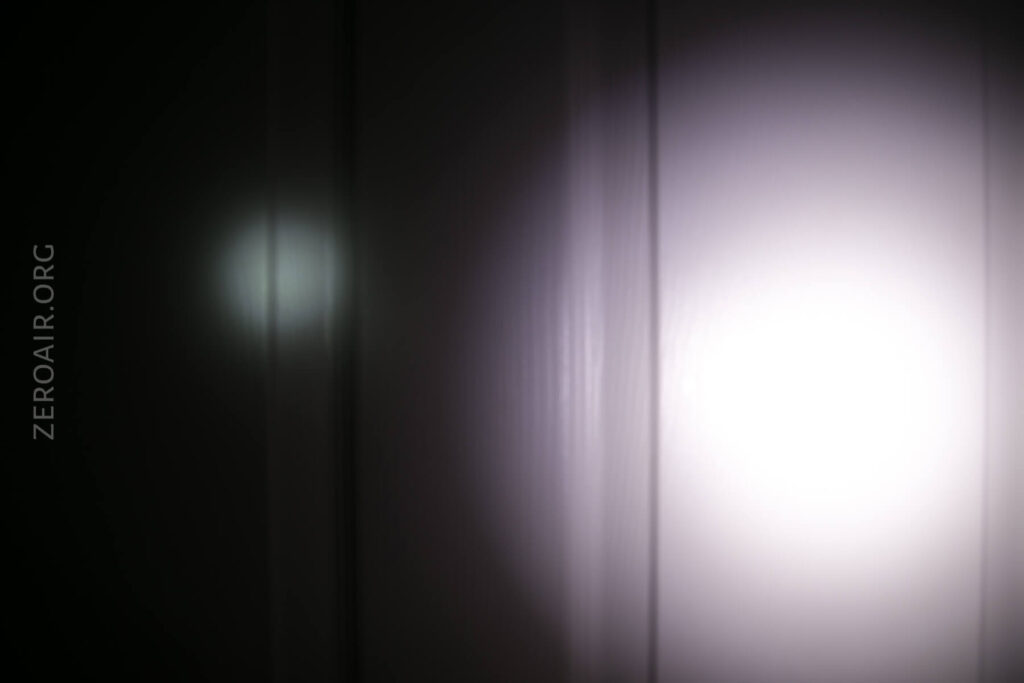
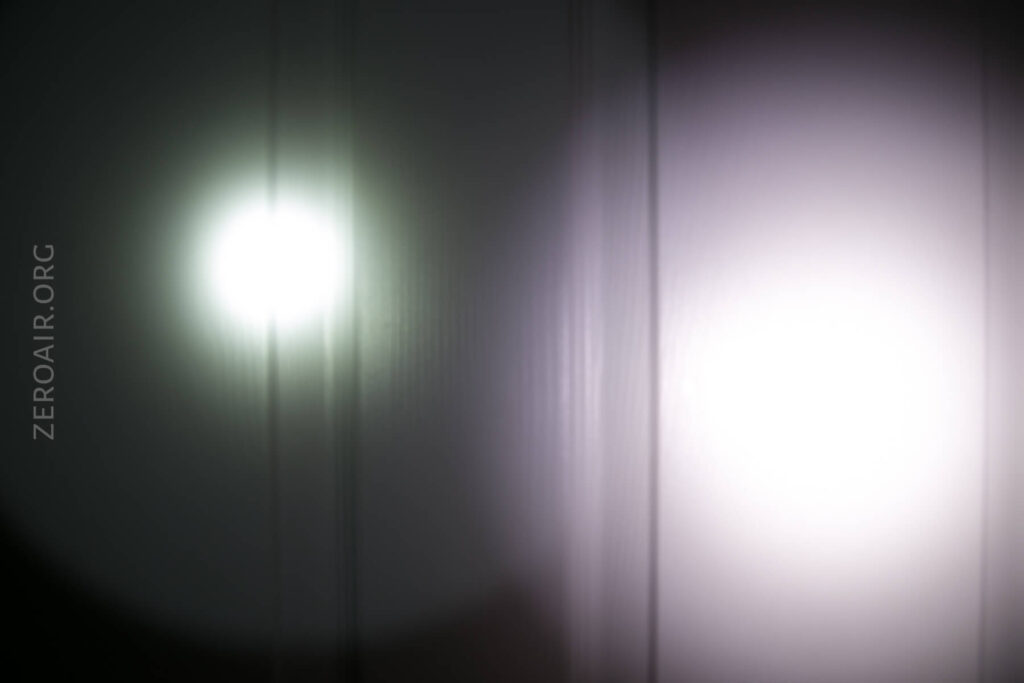
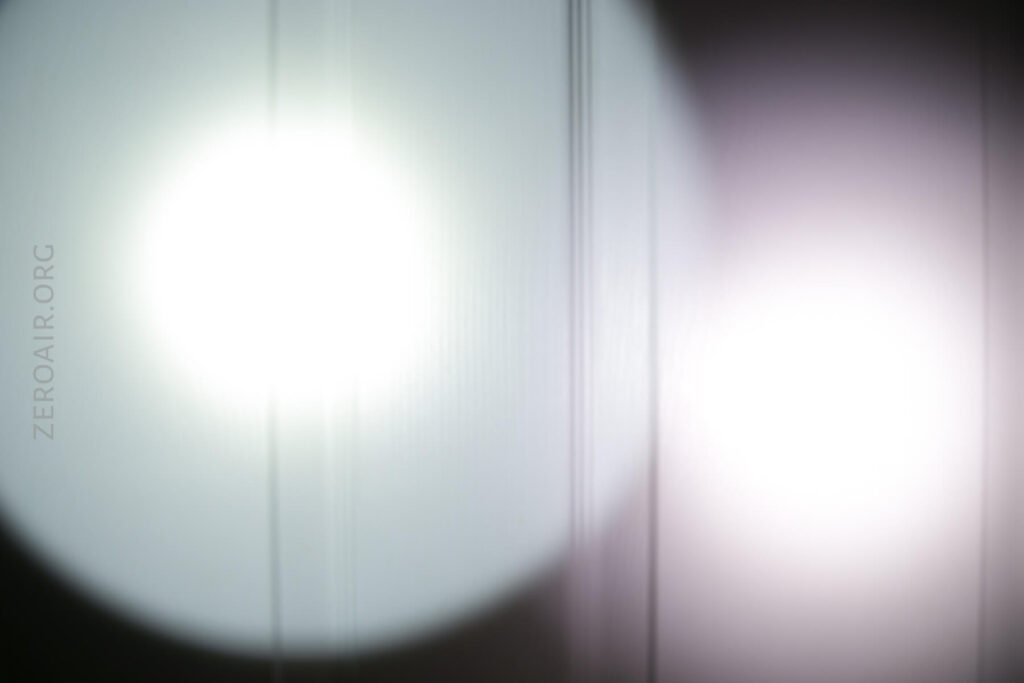
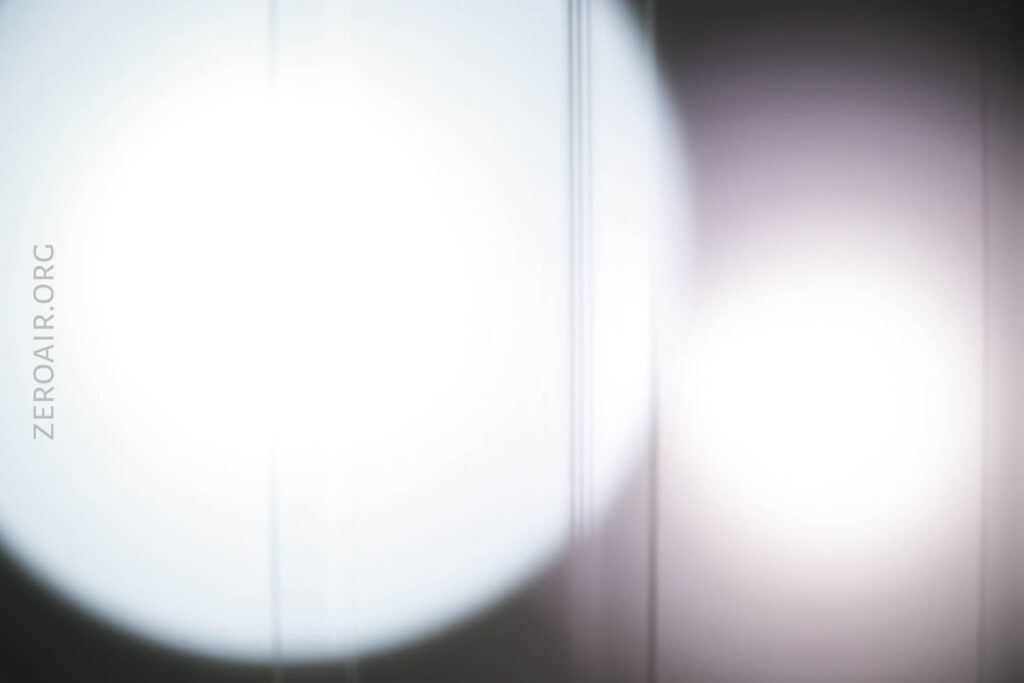
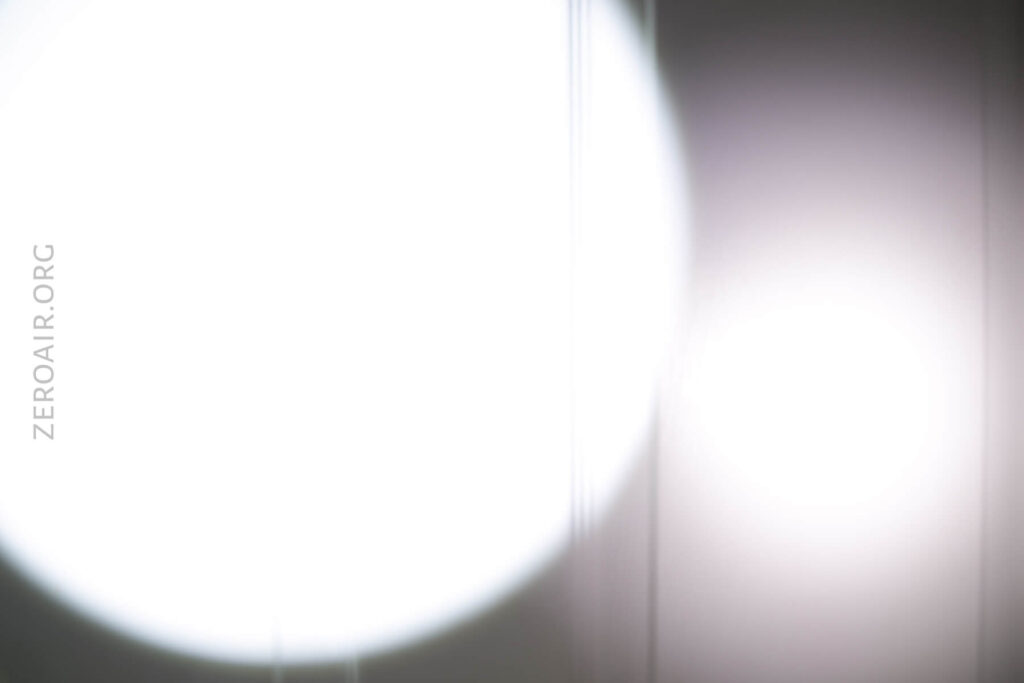
Hello. I don’t mean to interrupt your flashlight work (which, I assume, you are almost always doing), but I just saw that the GT Micro has a 35% off coupon available on Amazon, making it $26, and I was thinking about buying one. However, it looks like it does not include a battery, so I wasn’t sure whether or not this deal was worth trying to jump on while they are still in stick (10 left, as I’m posting this).
So, what are your thoughts on buying a GT Micro for $26? Is it a decent/good/great deal? Would you suggest trying to snatch one up at this price?
And do you have a good, affordable 14500 battery (that will work well in the GT Micro) that you would recommend? If so, where? And how much?
If you see this post shortly after I post it and would like to reply, I would appreciate it. As always, thank you for your time and your efforts!
GT Micro is worth $26 if for nothing else than it just being fun!
I don’t have any 14500 links but I’d buy from illumn or liionwholesale – I think the current requirements for the GT Micro aren’t that high, so just about any would work!
Thank you very much for the prompt reply, my friend. Now, I just need to go check and see if they have any GT Micros left in stock!
Also, if you happen to see this and want to reply again, do I specifically need to get a protected or unprotected battery?
I stand corrected about the above – the highest output is in fact a FET driven mode. So get the most capable cell you can find. Those are coincidentally and typically unprotected cells.
Hey, thanks for taking the time to reply again and let me know that information. Also, are there any decent/good 14500 batteries available on Amazon? The reason I ask is because I already have an Amazon Prime Account, so my address and payment information is already added and verified and it’s simple and convenient to order from there. So, do you have any suggestions for a 14500 battery on Amazon? Or, would you specifically recommend ordering from Illumn or Liionwholesale?
Sorry for asking so many questions. And thanks, again, for your time!
Amazon is absolutely not recommended for cell purchases (unfortunately!)
Thank you for the reply and the feedback. I’m curious, there are different 14500 batteries on Illumn.com with different mAh ratings, is the higher mAh generally the better option? Or is there a possibility of damaging a flashlight (like the GT Micro) by putting in a more-powerful (1000mAh) battery?
The batteries I’m looking at are the 14500 KeepPower 800mAh ICR14500 Protected Button Top for $5.40 and the 14500 KeepPower 1000mAh P1450C2 Protected Button for $6.99. Would you recommend one of the other? Should I buy a couple of each battery?
KeepPower 800mAh for $5.40: https://www.illumn.com/14500-keeppower-800mah-icr14500-protected-button-top.html
KeepPower 1000mAh for $6.99: https://www.illumn.com/14500-keeppower-1000mah-p1450c2-protected-button-top.html
And I came across this charger for $6.99: https://www.illumn.com/allmaybe-xtar-bc4-micro-usb-4-bay-li-ion-charger.html – is this a good charger?
If you feel like replying and sharing some feedback with me about these batteries and the charger, I would appreciate it. Thanks!
Lower mAh cells are usually higher current (at least if they are the same generation cells).
The 1000mAh cell looks like the better deal there to me. 4A is higher discharge than 2C (in that case).
XTAR chargers are good – I don’t think I’ve had that specific one but I expect it’d work as well as any other!
By the way, FYI, according to the information on one of the photos for the GT Micro on the Lumintop website (http://www.lumintop.com/gt-micro.html), it specifically states that “A PROTECTED button top battery with well reputation is highly recommended”.
Are they just trying to be cautious and prevent any potential problems? Should I go ahead and go with a Protected Button Top battery? Or, with your experience and knowledge, would you still suggest buying an Unprotected battery?
Since I have a penchant for mini throwers, this definitely came up on my list of “must buys”. I have practically all of the small throwers: Manker T01 II, BLF X5, Astrolux S3, Lumintop L1A. After comparing the throw of all these, I could say that the BLF GT Micro out-throws all of them by a wide margin. The beam has a tighter hotspot therefore able to push the beam further. The Emisar D1 can throw a bit further, but then, that’s a bigger light. What would have been a good touch was to enable this light to run regular AA’s. Why? Because in END OF DAYS situation, it’s the lights which use regular grocery/supermarket batteries which will rule. Imagine if the power went out permanently and you don’t have any solar panels? This is why it makes sense to own flashlights which run on regular batteries. Sure, if you have hundreds of charged lithium ion cells, but those will eventually run out compared to millions of standard AA cells out in the wild. Anyway, going back to the BLF GT Micro, I would definitely recommend this to anyone looking for a mini thrower that can beat most EDC’s of similar size. It is the best thrower to bring around on light duty, you will hardly notice it in your pocket. Oh yeah, get good quality high-capacity/high-drain 14500 cells to maximize this tiny beast of a thrower.